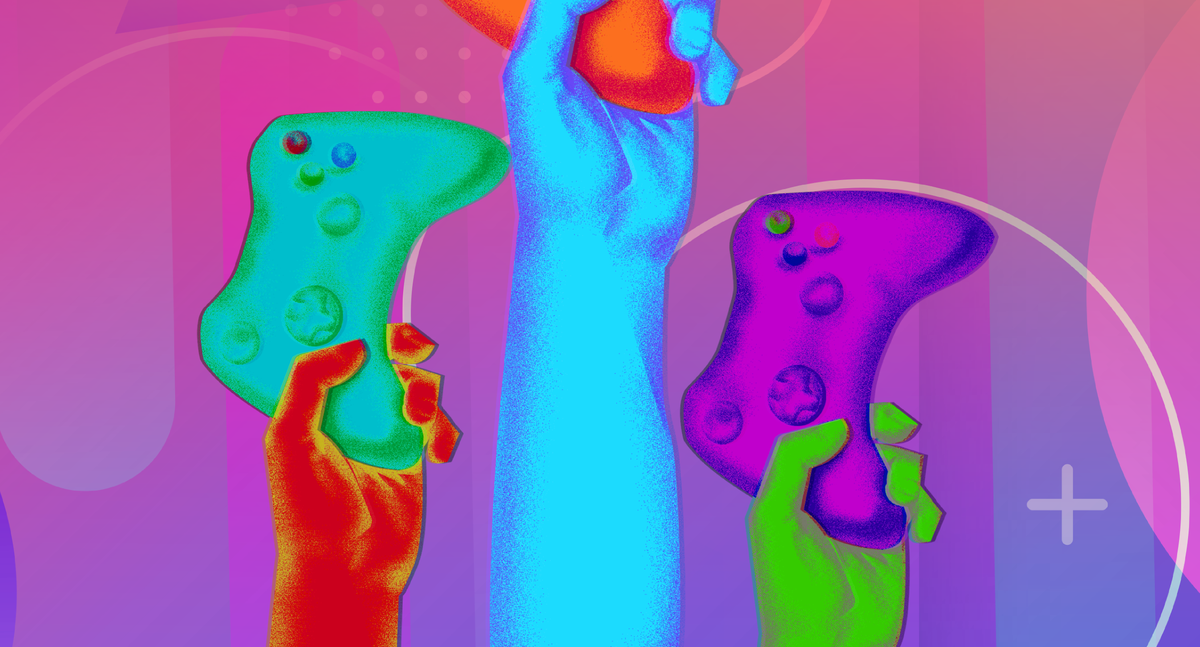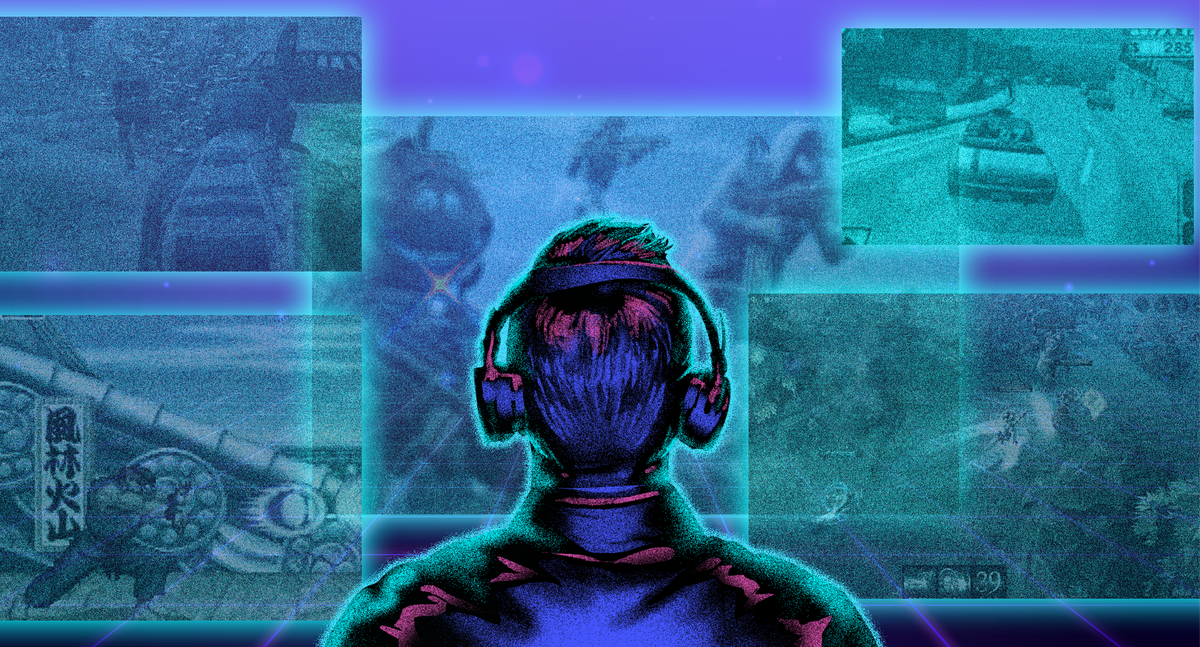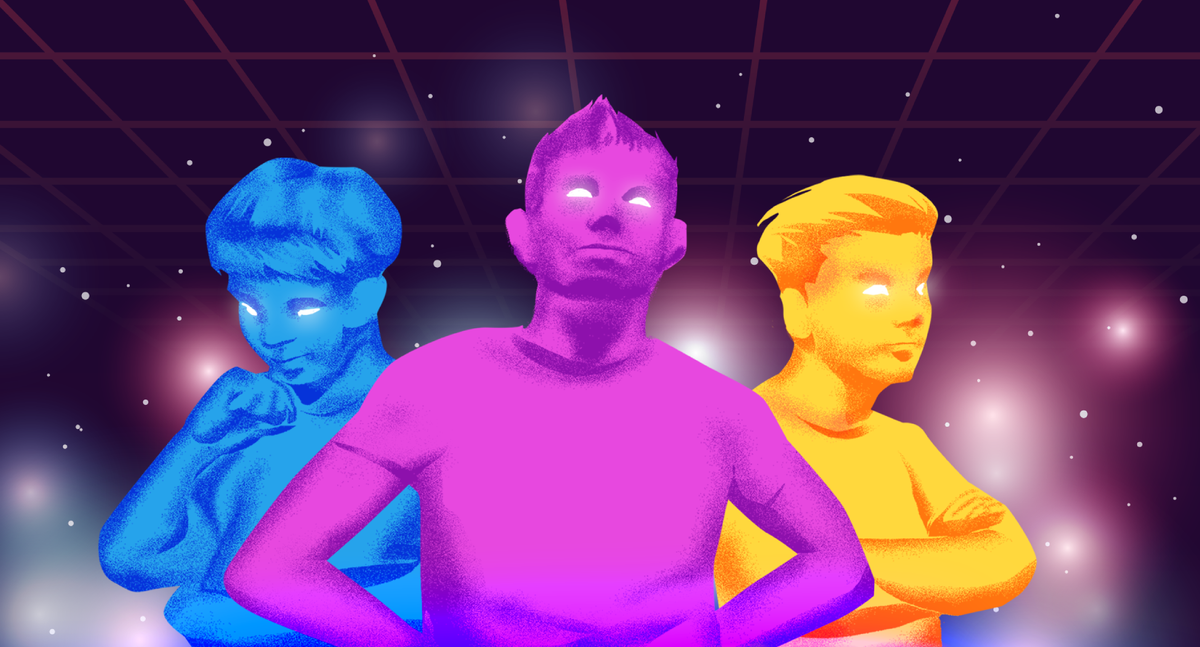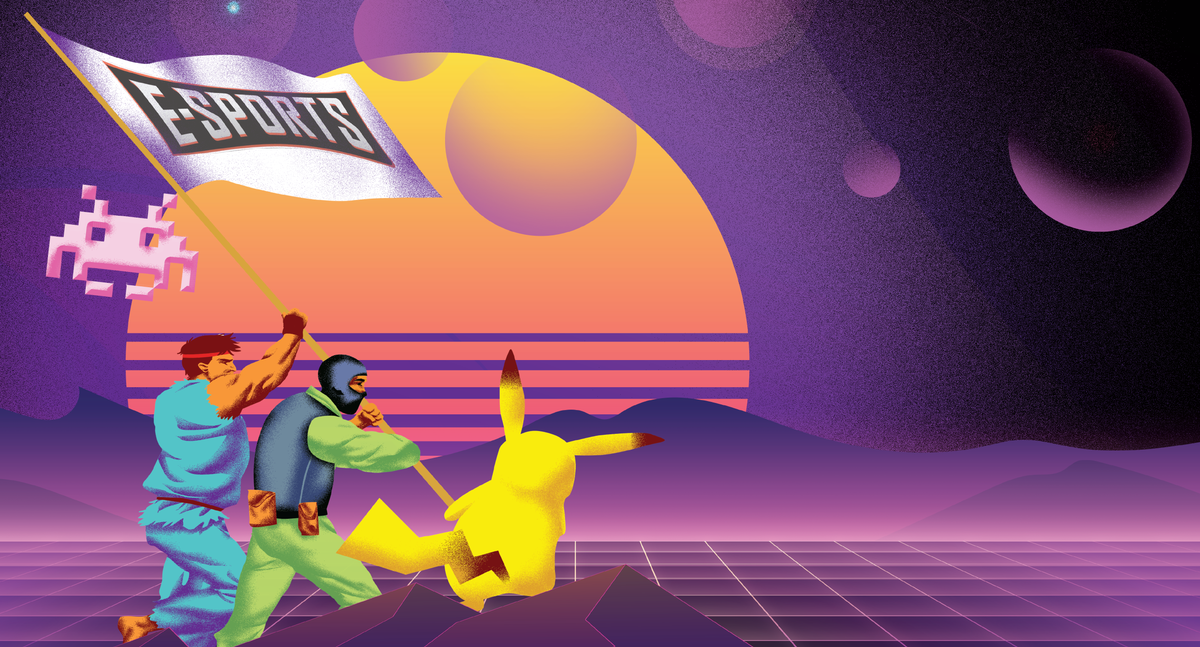Five years ago, in our July 2014 issue, I asked an important question about video games for the cover story: is it still just a game? Are we playing for enjoyment, or for a bigger purpose? Do we want to make video games our livelihood? I had talked about the divide between casual and hardcore players. I revisit this question now as eSports has become a surging field since then.
As someone who has played video games for the majority of my life, this question popped up around the time I discovered that playing video games can be done legitimately as a job. So whether or not it is still just a game, it’s become more and more obvious to gamers that this is not only something you can enjoy, but something you can also do to earn money, fame, and recognition, much like artists earn money, fame, and recognition through the various forms of art.

The History of eSports
Electronic sports (eSports) have been around since the dawn of video games. A 1972 Spacewar competition held at Stanford University is the earliest known video game competition, while the 1980 Space Invaders Championship is the first large-scale video game competition. The 1980 event attracted over 10,000 participants. During the 1980s, the video game record keeping organization Twin Galaxies was founded. The U.S. National Video Game Team was formed in 1983, and by the mid-1980s, shows such as Starcade showcased video games on a national level. By 1988, Netrek was considered the first online sports game, where up to 16 players could compete against each other online.
By the 1990s, popularity of video games had expanded to the point where video games tournaments were part of the video game community. In the 1989 movie The Wizard, the protagonist Jimmy Woods (played by Luke Edwards) plays in a video game competition called Video Armageddon. The game was Super Mario Bros. 3 (which wasn’t even released in the United States yet). The book and 2018 film Ready Player One is about a video game competition that involves players in virtual reality plugged in to escape the dystopian world around them, and involves a video game competition to find an easter egg that will give them control over the virtual reality world OASIS.
The 1990 Nintendo World Championships (NWC) was a one-off tournament that toured across North America. Players played Super Mario Bros., Rad Racer, and Tetris. The winners of each age category were given US$10,000 in a savings bond, a 1990 Geo Metro convertible, a 40” rear-projection television, and a gold-plated Mario trophy. The NWC came back in 2015. There was a mixture of old and new games, with Splatoon, The Legend of Zelda, Metroid Prime: Federation Force, Super Metroid, Mario Kart 8, Balloon Fight, and Super Smash Bros. for Wii U being the games one can compete in. The final contest included the then-unreleased Super Mario Maker. Nintendo legend Shigeru Miyamoto himself presented the winner with a trophy and gave each finalist an autographed New Nintendo 3DS XL. The NWC came back in 2017 as well. There are rumors that it could be an annual event at another convention such as the Electronic Entertainment Expo (E3).
Games such as Quake, Warcraft, and Counter-Strike gained prominence during the late 1990s. The Evolution Championship Series (EVO) was founded in 1996 as a fighting game tournament. The tournament still runs to this day. What muddied eSports in the 1990s was a focus on the console wars, the video game violence controversies that led to the creation of the Entertainment Software Rating Board (ESRB), and concerns over gaming addiction. In addition, there were also technical limitations: the commercial Internet was still in its infancy in the United States and there were numerous roadblocks to overcome to make eSports a nationwide thing. One of the major obstacles at that time, in my opinion, is that there was a stigma around gaming. That stigma was that gamers were generally seen as antisocial individuals.
By the 2000s, eSports started to grow in prominence. Several television channels were dedicated to discussing video games, such as G4. South Korea became the hub of esports; there was even a government department formed in 2000 called the Korean e-Sports Association which operated under the Ministry of Culture, Sports, and Tourism. One notable incident arose in 2005 when a South Korean gamer died from playing Starcraft for 50 straight hours. In addition, eSports players became famous in the country and were treated like celebrities, much like we would treat NBA players like LeBron James or Russell Westbrook. South Korea truly started off what would become a revolution in the gaming world: normalizing gaming and bringing it into the mainstream.

From Zero To Hero: Streaming Allows Players To Get Into eSports
When Twitch was founded in 2011, the platform allowed gamers to stream themselves playing video games and allowed audiences to watch them. Now, Twitch is one of the most popular streaming services in the world. Everyday people utilize the platform to gain a following. It is not uncommon to see fans donate hundreds of dollars to their favorite streamers. Those who are partnered with Twitch also can make a living off of it. Twitch streamers often blend in their streaming efforts with social media, allowing fans to interact with streamers on Facebook, Twitter, Instagram, Snapchat, and more. In a way, streamers are changing what it means to be a celebrity.
Some of today’s streamers play a variety of games, including League of Legends, Fortnite, Overwatch, and more. Ninja (real name Tyler Blevins) is one of the most prominent streamers on Twitch. His previous experience includes stints with eSports teams such as Cloud9 and Team Liquid. He reportedly earns US$500,000 a month streaming Fortnite. He was also the first streamer to appear on the cover of ESPN The Magazine in September 2018. Ninja has since branched out into other games such as Apex Legends, currently one of the most popular battle royale games out there today. Ninja averages 30,000 viewers every time he goes online. Smaller, less-known streamers can even get between 20 and 100 viewers per stream.
Many streamers are also female; this has led to huge backlash from gamers who opine that women are invading a once male-dominated domain. There were very few female gamers even during the console war era. Speaking from personal experience, it was very rare for me to find a girl who enjoyed video games even in high school (around 2002 or so), but today, streaming can be considered a 50/50 affair (at least in terms of gender). World of Warcraft is another popular game for female streamers. While the representation of women in eSports is still small, it will grow as we enter the new decade. There have been many instances of female streamers being stalked and harassed, which has left the streaming community wondering if women truly have a place in the surging industries of streaming and eSports.

Everyone Is Catching On
However, the rise of eSports has not been without controversy and backlash from various figures. In 2015, then-ESPN commentator Colin Cowherd made a series of comments criticizing eSports. “I am not a friend of eSports,” he said. “Go outside,” he also said, stereotyping gamers as people who are anti-social and living in their mom’s basement. The criticism has surged all the way to the top of sports. International Olympic Committee president Thomas Bach said, “We cannot have in the Olympic program a game which is promoting violence or discrimination. So-called killer games. They, from our point of view, are contradictory to the Olympic values and cannot therefore be accepted,” he said following the 2018 Asian Games, which featured eSports as a demonstration sport. It could be included by the 2022 Asian Games.
Despite Cowherd’s anti-eSports rants and Bach’s criticism of having eSports as a potential Olympic sport, professional athletes are huge fans of gaming. They appear on the covers of sports games every year, and play a variety of other games as well, sometimes in collaboration with other celebrities and fans themselves. NBA All-Star Gordon Hayward has been very astute when it comes to eSports. He said in July 2018 to ESPN, “Everybody around the world is starting to understand there is a lot of money that can be had in eSports. You see, not just the NBA, but business leaders and CEOs are investing in teams; Robert Kraft is invested in an Overwatch team. At this point and time, I wanted to have a team for the last four or five years and I’ve almost pulled the trigger three or four times, but at this point and time when you have Robert Kraft jumping in, it’s almost over my head. There’s some big money at play.”
Hayward’s statement about various celebrities investing in eSports is right. Rapper Drake has invested in eSports, and has played alongside Ninja in Fortnite during his streams. Hip-hop mogul Sean “Diddy” Combs is another investor; he invested in a Los Angeles organization named PlayVS which allows high school students to compete in eSports, and ultimately, eSports scholarships at a number of universities. Dallas Mavericks owner Mark Cuban and actor Ashton Kutcher have also invested in eSports betting. Hall of Famer and NBA legend Magic Johnson is co-owner of an investment group which acquired ownership of Team Liquid, one of the most prominent eSports organizations today.

Successful eSports Teams and Leagues
EVO, as mentioned before, is possibly the world’s oldest eSports competition. Some games included in the competition include classics such as Street Fighter, Tekken, Mortal Kombat, Super Smash Bros., and Soul Calibur. Newer games such as DragonBall FighterZ and remakes of old fighting games such as Samurai Showdown.
The Cyberathlete Professional League (CPL) came next in 1997. It also produced one of the first celebrities in eSports, Fatal1ty (real name Johnathan Wendel). It also had an online league for amateurs called the Cyberathlete Amateur League (CAL). It was one of the largest gaming leagues in North America upon its dissolution in 2009. One of the main games played in CAL was Counter-Strike. At its peak it had 20,000 teams and over 600,000 players in North America alone.
One of the most successful eSports leagues is the Overwatch League (OWL). OWL was founded by Blizzard Entertainment in 2017 and now boasts 20 teams across the world. The league mirrors actual sports leagues like the MLB and NHL in that it also has minor leagues (Overwatch Open and Overwatch Contenders).
These teams’ owners also own another professional sports team: the Boston Uprising is owned by the Kraft Group, which also owns the NFL’s New England Patriots. The Philadelphia Fusion is owned by Comcast, who also owns the NHL’s Philadelphia Flyers. There is so much crossover between traditional sports and eSports today that eSports cannot be relegated to something that is done behind closed doors.
The Money Is There
Financial analysts have weighed in on the power of eSports. It is estimated that the total revenue of eSports will surpass $1 billion this year, with close to US$1.65 billion in revenue by 2021. The number of viewers could approach 600 million by 2020. One tournament, the Intel Extreme Masters (46 million viewers), drew more viewership than the Stanley Cup (4.6 million viewers, World Series (18.7 million viewers), and the NBA Finals (20.4 million viewers) combined.
An October 2018 Forbes list listed eSports team Cloud9 as the most valuable eSports team in the world at $310 million, with Team SoloMid at $250 million and Team Liquid at $200 million. Given the value of the companies who own other eSports teams, the potential could explode even further as companies are always making games and looking for the next big hit.

Bringing It Home
eSports teams have even invested in gaming and streaming houses for their players to live and work. Players don’t even have to be part of an eSports team for this to happen. Some players look for roommates to live with and work on their streams and other aspects of gaming such as eSports competition. The idea was piloted in South Korea for StarCraft players, but has since spread to numerous other countries, including the Philippines. While the gaming house is still a popular concept, there are pros and cons to living in a gaming house.
The blurring of video games and real life in a gaming house had lots of unanswered questions: do people just play video games all day? In fact, the opposite was true. Gamers followed a routine just like the rest of society: they woke up, worked out, played games, and stopped to eat. South Korean culture and Western culture are radically different; the idea of living where you work is seen as acceptable in South Korea, but not so much in other countries.
According to Team Liquid co-owner LiQuiD112 (real name Steve Arhancet), “Gaming houses are a pressure cooker for team dynamics, which play such a vital role in team performance. When you don’t have separation between work and life, everything bleeds together.” This has a parallel outside of gaming as well: many people don’t have work/life balances, and often bring their work home with them. This affects the way people interact with one another.
Is It Still Just A Game?
I go back to my original question: is it still just a game? At its very core, it really is just that: a game. It’s something people can pick up and have fun with, but at the same time, it caters to people who want to make it more than just a hobby. People may enjoy video games occasionally, but they want more out of that. For me, video games bring me stress relief, and for others, they may bring something else. They may bring someone purpose in their lives. People may find passion in playing video games for fun, or they may find glory and triumph in conquering their opponents.
With constant intersections between video games, the Internet, streaming, social media, celebrity, business, and more, it probably isn’t the game that we once picked up back in the early 1990s when we came home from school and just wanted to relax. With the rise of the Internet, people bring the game to the rest of the world. Perhaps all these other aspects of modern gaming have relegated the idea of being able to come home and play games like Super Mario Bros. until 3 am.
The rise of eSports has allowed anyone to take something they enjoy and make a living off of it, and the accessibility of games today compared to over 30 years ago shows that. But what eSports has done is basically turn a lot of things we see upside down. eSports celebrities and streamers are now more accessible individuals than your typical athletes, musicians, actors, and other celebrities who may live in a world that we dream of living in. But video games have brought people together more than ever in recorded human history, and that is why I think it is more than just a game.
Words by Jose Alvarez. Also published in GADGETS MAGAZINE May 2019 Issue
